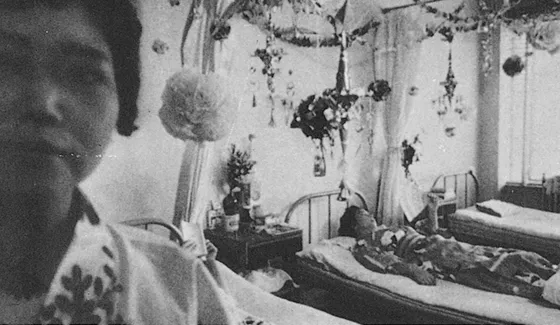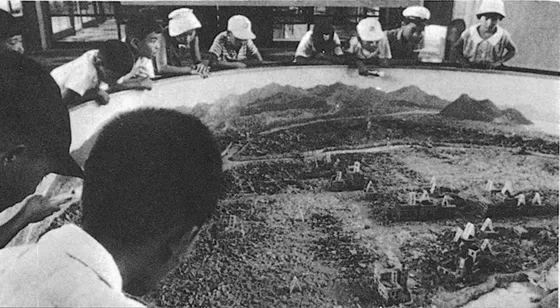
eBook - ePub
Hiroshima Mon Amour
A Screenplay
Marguerite Duras
This is a test
Partager le livre
- 112 pages
- English
- ePUB (adapté aux mobiles)
- Disponible sur iOS et Android
eBook - ePub
Hiroshima Mon Amour
A Screenplay
Marguerite Duras
Détails du livre
Aperçu du livre
Table des matières
Citations
À propos de ce livre
The award-winning screenplay for the classic film the New York Post hailed as "overwhelming... a motion picture landmark." One of the most influential works in the history of cinema, Alain Renais's Hiroshima Mon Amour gathered international acclaim upon its release in 1959 and was awarded the International Critics' Prize at the Cannes Film festival and the New York Film Critics' Award. Ostensibly the story of a love affair between a Japanese architect and a French actress visiting Japan to make a film on peace, Hiroshima Mon Amour is a stunning exploration of the influence of war on both Japanese and French culture and the conflict between love and inhumanity.
Foire aux questions
Comment puis-je résilier mon abonnement ?
Il vous suffit de vous rendre dans la section compte dans paramètres et de cliquer sur « Résilier l’abonnement ». C’est aussi simple que cela ! Une fois que vous aurez résilié votre abonnement, il restera actif pour le reste de la période pour laquelle vous avez payé. Découvrez-en plus ici.
Puis-je / comment puis-je télécharger des livres ?
Pour le moment, tous nos livres en format ePub adaptés aux mobiles peuvent être téléchargés via l’application. La plupart de nos PDF sont également disponibles en téléchargement et les autres seront téléchargeables très prochainement. Découvrez-en plus ici.
Quelle est la différence entre les formules tarifaires ?
Les deux abonnements vous donnent un accès complet à la bibliothèque et à toutes les fonctionnalités de Perlego. Les seules différences sont les tarifs ainsi que la période d’abonnement : avec l’abonnement annuel, vous économiserez environ 30 % par rapport à 12 mois d’abonnement mensuel.
Qu’est-ce que Perlego ?
Nous sommes un service d’abonnement à des ouvrages universitaires en ligne, où vous pouvez accéder à toute une bibliothèque pour un prix inférieur à celui d’un seul livre par mois. Avec plus d’un million de livres sur plus de 1 000 sujets, nous avons ce qu’il vous faut ! Découvrez-en plus ici.
Prenez-vous en charge la synthèse vocale ?
Recherchez le symbole Écouter sur votre prochain livre pour voir si vous pouvez l’écouter. L’outil Écouter lit le texte à haute voix pour vous, en surlignant le passage qui est en cours de lecture. Vous pouvez le mettre sur pause, l’accélérer ou le ralentir. Découvrez-en plus ici.
Est-ce que Hiroshima Mon Amour est un PDF/ePUB en ligne ?
Oui, vous pouvez accéder à Hiroshima Mon Amour par Marguerite Duras en format PDF et/ou ePUB ainsi qu’à d’autres livres populaires dans Medios de comunicación y artes escénicas et Guiones de cine. Nous disposons de plus d’un million d’ouvrages à découvrir dans notre catalogue.
Informations
Sous-sujet
Guiones de cineSCENARIO
Part I
(As the film opens, two pair of bare shoulders appear, little by little. All we see are these shoulders—cut off from the body at the height of the head and hips—in an embrace, and as if drenched with ashes, rain, dew, or sweat, whichever is preferred. The main thing is that we get the feeling that this dew, this perspiration, has been deposited by the atomic “mushroom” as it moves away and evaporates. It should produce a violent, conflicting feeling of freshness and desire. The shoulders are of different colors, one dark, one light. Fusco's music accompanies this almost shocking embrace. The difference between the hands is also very marked. The woman's hand lies on the darker shoulder: “lies” is perhaps not the word; “grips” would be closer to it. A man's voice, flat and calm, as if reciting, says:)
HE: You saw nothing in Hiroshima. Nothing.
(To be used as often as desired. A woman's voice, also flat, muffled, monotonous, the voice of someone reciting, replies:)
SHE: I saw everything. Everything.
(Fusco's music, which has faded before this initial exchange, resumes just long enough to accompany the woman's hand tightening on the shoulder again, then letting go, then caressing it. The mark of fingernails on the darker flesh. As if this scratch could give the illusion of being a punishment for: "No. You saw nothing in Hiroshima.” Then the woman's voice begins again, still calm, colorless, incantatory:)
SHE: The hospital, for instance, I saw it. I'm sure I did. There is a hospital in Hiroshima. How could I help seeing it?



(The hospital, hallways, stairs, patients, the camera coldly objective.* [We never see her seeing.] Then we come back to the hand gripping—and not letting go of—the darker shoulder.)
HE: You did not see the hospital in Hiroshima. You saw nothing in Hiroshima.
(Then the woman's voice becomes more . . . more impersonal. Shots of the museum.† The same blinding light, the same ugly light here as at the hospital. Explanatory signs, pieces of evidence from the bombardment, scale models, mutilated iron, skin, burned hair, wax models, etc.)
SHE: Four times at the museum. . . .
HE: What museum in Hiroshima?
SHE: Four times at the museum in Hiroshima. I saw the people walking around. The people walk around, lost in thought, among the photographs, the reconstructions, for want of something else, among the photographs, the photographs, the reconstructions, for want of something else, the explanations, for want of something else.
Four times at the museum in Hiroshima.
I looked at the people. I myself looked thoughtfully at the iron. The burned iron. The broken iron, the iron made vulnerable as flesh. I saw the bouquet of bottle caps: who would have suspected that? Human skin floating, surviving, still in the bloom of its agony. Stones. Burned stones. Shattered stones. Anonymous heads of hair that the women of Hiroshima, when they awoke in the morning, discovered had fallen out.
I was hot at Peace Square. Ten thousand degrees at Peace Square. I know it. The temperature of the sun at Peace Square. How can you not know it? . . . The grass, it's quite simple. . .
HE: You saw nothing in Hiroshima. Nothing.
(More shots of the museum. Then a shot of Peace Square taken with a burned skull in the foreground. Glass display cases with burned models inside. Newsreel shots of Hiroshima.)
SHE: The reconstructions have been made as authentically as possible.
The films have been made as authentically as possible.
The illusion, it's quite simple, the illusion is so perfect that the tourists cry.
One can always scoff, but what else can a tourist do, really, but cry?
I've always wept over the fate of Hiroshima. Always.
(A panorama of a photograph taken of Hiroshima after the bomb, a “new desert” without reference to the other deserts of the world.)
HE: No. What would you have cried about?
(Peace Square, empty under a blinding sun that recalls the blinding light of the bomb. Newsreels taken after August 6, 1945. Ants, worms, emerge from the ground. Interspersed with shots of the shoulders. The woman's voice begins again, gone mad, as the sequence of pictures has also gone mad.)
SHE: I saw the newsreels.
On the second day, History tells, I'm not making it up, on the second day certain species of animals rose again from the depths of the earth and from the ashes.
Dogs were photographed.
For all eternity.
I saw them.
I saw the newsreels.
I ...